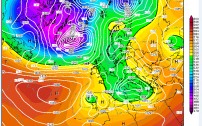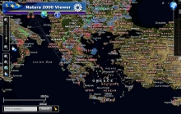Ornithological Value
The Messolonghi-Etoliko Lagoon National Park is known both for its importance as a fish production region and as a hosting space for a large variety of birds.
The ornithological value of the national park consists in being both an important resting and feeding station for the birds of the region during their migration and an important wintering area for them. It is also an important breeding ground for many waterfowl and wading birds, rare and threatened at European or world level. Numbers speak for themselves: The wintering duck populations range between 25-30,000 individuals.
Same numbers for the coots: some years they exceed the 30,000 individuals ie, the 1% of the European population. This is also a criterion for the inclusion of the region in the important EU bird areas.
Wintering Flamingos population is also grown, and has now reached 10,000 individuals. More than 280 bird species have been counted in this area so far, which is the 70-75% of the total number of species in Greece. During the wintering period, over 15-20,000 waders have been counted. Wintering Coots reach 30-35,000 individuals. All together represent the 12-13% of the total number of waterfowl birds wintering in the Greek wetlands. The habitat diversity, the existence of scattered hills, and the proximity to Mountain Arakynthos, are factors that attract the largest variety of birds of prey, across southern Greece. 32 out of the 38 European species These reasons among others, led to the inclusion of the region’s wetlands to the Ramsar Convention List, that promotes the conservation of wetlands of international importance, especially for waterfowl. The importance of the habitats of flora and fauna has included, rightfully, the area in the Natura 2000 network, as one of the most important protected areas of our country.
Birds
At least 290 bird species have been observed in the area, 220 out of which occur regularly. At least 70 species are threatened at the European level. The ornithological interest of the area by season has as follows:
Winter: Duck and Coot wintering populations reach by mean 20,000 and 25,000 individuals respectively. The population of wintering Waders is one the greatest in Greece and approaches 16,000 individuals. Waders include at least 20 different species among which the Golden Plover (Pluvialis apricaria) (2,000-3,500ind.). Other interesting species which winter in big populations are: The Slender Billed Gull (Larus genei) (many hundreds), the Avocet (Recurvisrostra avocetta) (few hundreds), various herons (many hundreds), the Spoon Bill (Platalea leucordia) and the Flamingo (Phoenicopterus rubber)(~10,000ind.). Wintering raptors include the Osprey (Pandion haliaetus)(10ind.), the Spotted Eagle (Aquila clanga), the Golden Eagle (Aquila chrysaetos) and occasionally the Imperial Eagle (Aquila heliaca). The Peregrines (Falco peregrinus) the Saker (Falco cherrug), other falcons and harriers and kits are also present.
Migrations: many thousands of Ducks, Herons, Waders stop over the Park and feed for many days (all April until mid-May). Some of the threatened ones include the Ruff (Philomachus pugnax), the Golden Ibis (Plegadis falcinellus), the Purple Heron (Ardea purpurea), the Great White Heron or Great egret (Ardea Alba), the Black Tern (Chlidonias niger), the Whiskered Tern (Chlidonias hybridus), the Black-winged Stilt (Himantopus himantopus) and the Collarred Pratincole (Glareola pratincola). Many tenths of passering species also stop in the Park, such as Wheaters, Warblers, Flycatchers, etc.
Breeding: The area continues to support the breeding of many waterfowl species such as the Little Tern (Sterma albifrons) the Common Tern (Sterna hirundo), the Gull-billed Tern (Sterna nilotica), the Collarred Pratincole (Glareola pratincola), the Oystercatcher (Himantopus ostralegus), the Stone Curlew (Burhinus oedicnemus), the Black-winged Stilt (Himantopus himantopus), the Kentish Plover (Charadrius alexandrinus) and the Red Shank (Tringa totanus). Other interesting species which breed in the area are the White Stork (Ciconia ciconia) and the Little Kestrel (~100pers). The Raptors which breed in the surrounding hilly zone include the Short-toed Eagle (Circaetus gallicus), the Griffon Vulture (Gyps fulvus), the Peregrine (Falco peregrinus)and occasionally the Lanner (Falco biarmicus). The characteristic passerines of the wetland include the Short-toed Lark (calandrella brachydactyla), the Calandra Lark ((Melancorypha calandra), the Crested Lark (Galerida cristata), the Grey Wagtail (Motacilla cinerea) and the White Waggtail (Motacilla alba).






